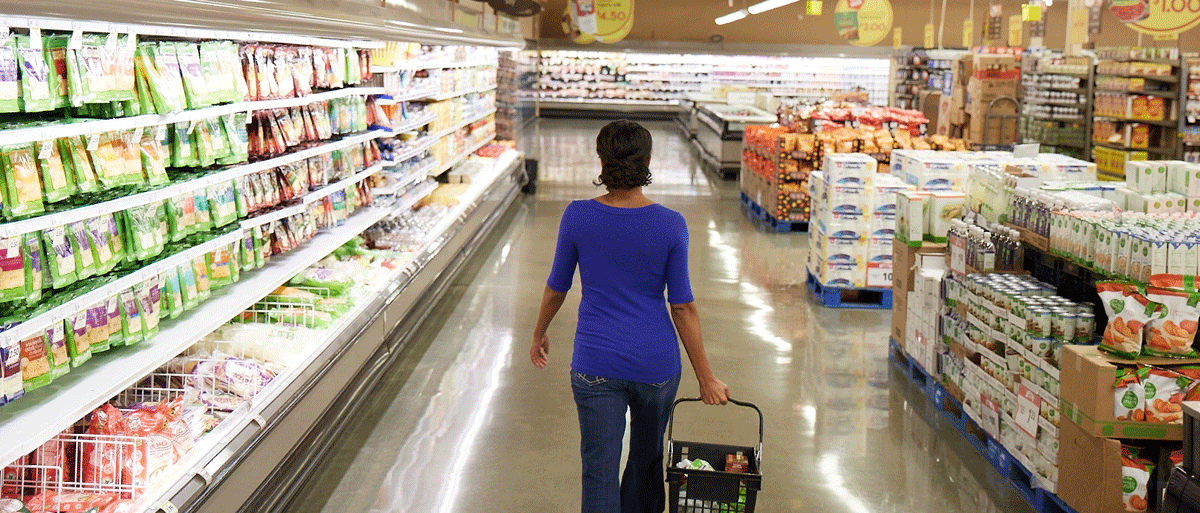People are increasingly interested in where their food comes from and how it’s being produced, and they’re coming to registered dietitians with their questions. This blog will take you on a journey to tell the story of milk from farm to table. Because, after all, as a mom and registered dietitian working on behalf of the dairy farm families in Colorado, southwest Kansas, Montana, New Mexico, western Oklahoma, Texas and Wyoming, I want you to feel good about milk – how it’s produced, its freshness and simplicity, and the story that connects your glass of milk with the local dairy farm families who produce it.
On the Farm
There are many moving parts on a dairy farm, from facility management, to herd health, to feeding dairy cows, to sanitation in the milking parlor, all of which ultimately affect the bottom line – the quantity and quality of milk produced.
Cows are milked two to three times each day with specialized milking equipment that milks the cows and pumps that milk directly from the cow to a refrigerated storage tank, where it is quickly cooled to preserve freshness and safety. It is important to note that milk never touches human hands – just one of the many food safety measures in place.
Animal welfare is a top priority for dairy farmers because healthy cows produce high quality milk. For that reason, dairy cows receive regular veterinary care, including periodic check-ups, preventative vaccinations and prompt treatment of illness. It is important to note that dairy cows are not routinely treated with antibiotics. Just as you’d only treat a sick child with antibiotics under the supervision of a doctor, dairy farmers care for their cows in a similar manner. When an illness requires that a cow be treated, antibiotics are administered according to strict Food and Drug Administration guidelines, the cow is milked separate from the milking herd, and her milk does not enter the food supply.
At the Processing Plant
Fresh milk is driven from the dairy farm to a local dairy processing plant in an insulated, sealed tanker truck. You’ve probably seen one on the highway – it’s similar to a giant thermos on wheels.
Prior to leaving the farm, and upon arrival at the processing plant, every tanker load of milk is tested for antibiotics. In the extremely rare event that milk tests positive, it is disposed of immediately and never reaches the public.
Once the milk is unloaded from the tanker truck, it is homogenized, pasteurized and packaged into bottles or cartons. Pasteurization is a process of heating raw milk at a high enough temperature for a sufficient length of time to destroy bacteria which can cause serious illnesses. Traditional pasteurization heats the milk to 161 degrees Fahrenheit for a minimum of 15 seconds while ultra-high temperature pasteurization heats the milk to 280 degrees Fahrenheit for a minimum of 1 to 2 seconds. Both methods ensure the milk is safe to drink and neither affects milk’s nutritive value.
Distribution companies pick up milk and other dairy products in refrigerated trucks from the local processing plants and deliver them to grocery stores, convenience markets, gas stations, schools and other retail outlets.
For 80% of Colorado’s milk, the journey from farm to plant is 40 miles or less, and in most instances, the milk you buy in your grocery store was harvested on farm less than 2 days (48 hours) prior. Now that’s local!
Regardless of whether your choice in dairy is influenced by taste or nutrition, you too can feel good about milk, cheese and yogurt as part of a balanced diet. In fact, milk is a nutritional bargain at less than 25 cents per 8-ounce glass, on a gallon basis. Especially when you think of all the liquid assets inside! Milk provides great taste plus 9 essential nutrients – it’s how nature does wellness.
Need some help decoding the dairy aisle, check out this recent blog on the topic.
Do you want to learn more about each step in the process of getting milk from farm to table? We’ve got you covered…
The Art and Science of Dairy from Farm to Table: An Intro
The Art and Science of Dairy from Farm to Table: Production of Feed and Reducing Waste
The Art and Science of Dairy from Farm to Table: Milk Production
The Art and Science of Dairy from Farm to Table: Raw Milk Transport
The Art and Science of Dairy from Farm to Table: Processing and Packaging
The Art and Science of Dairy from Farm to Table: Distribution and Retail
Go on a virtual dairy farm tour or try a new dairy recipe.




